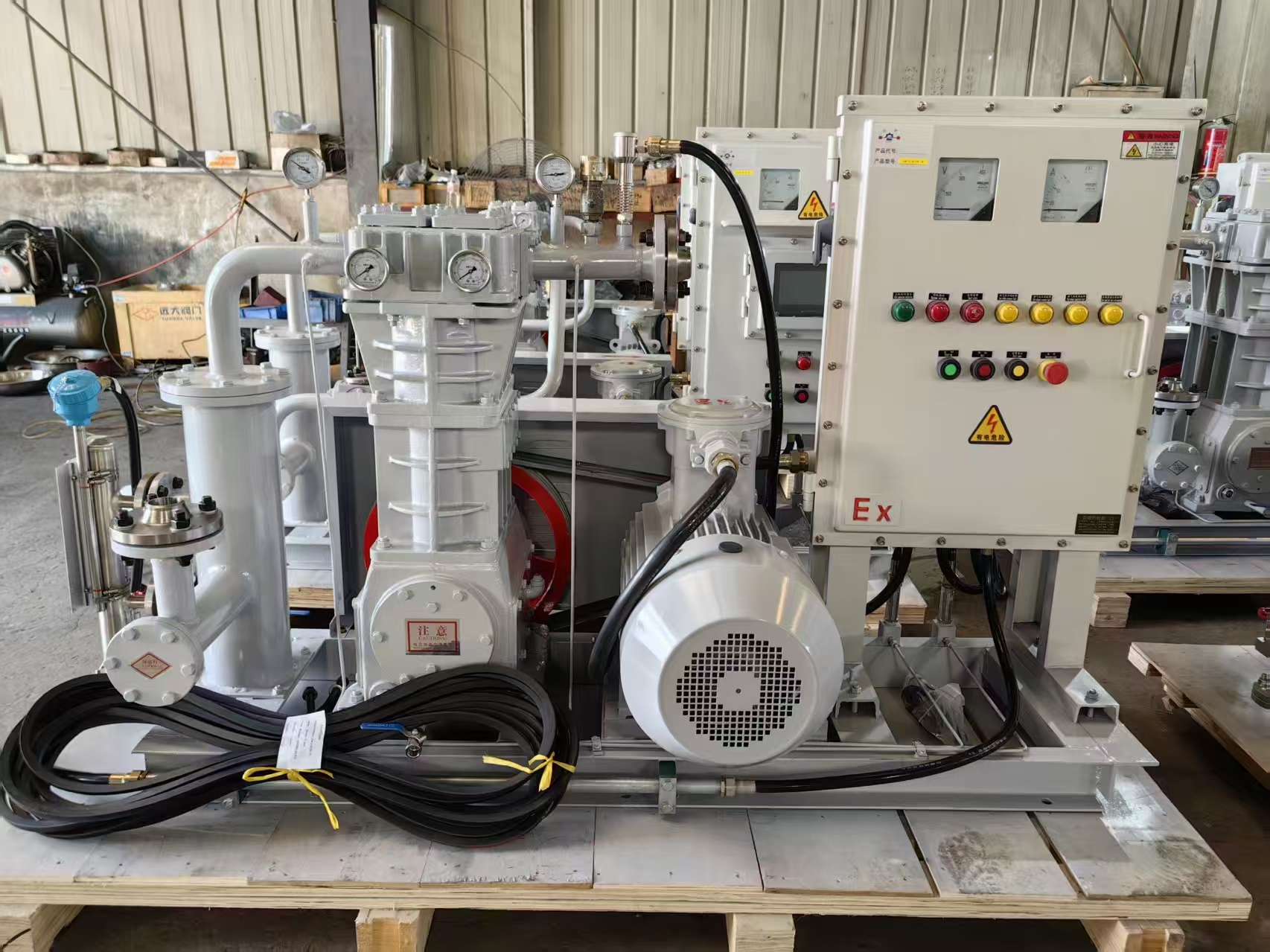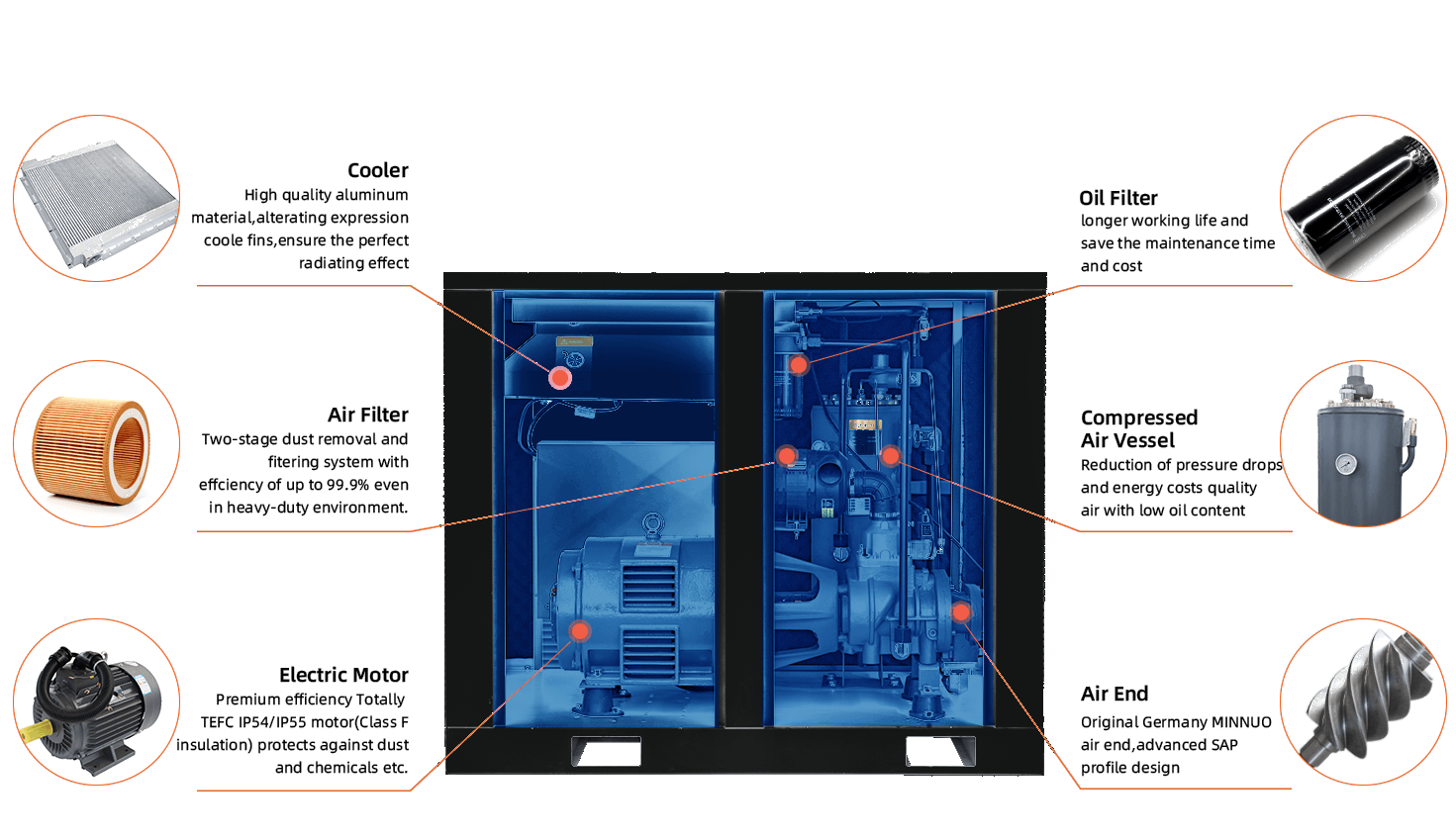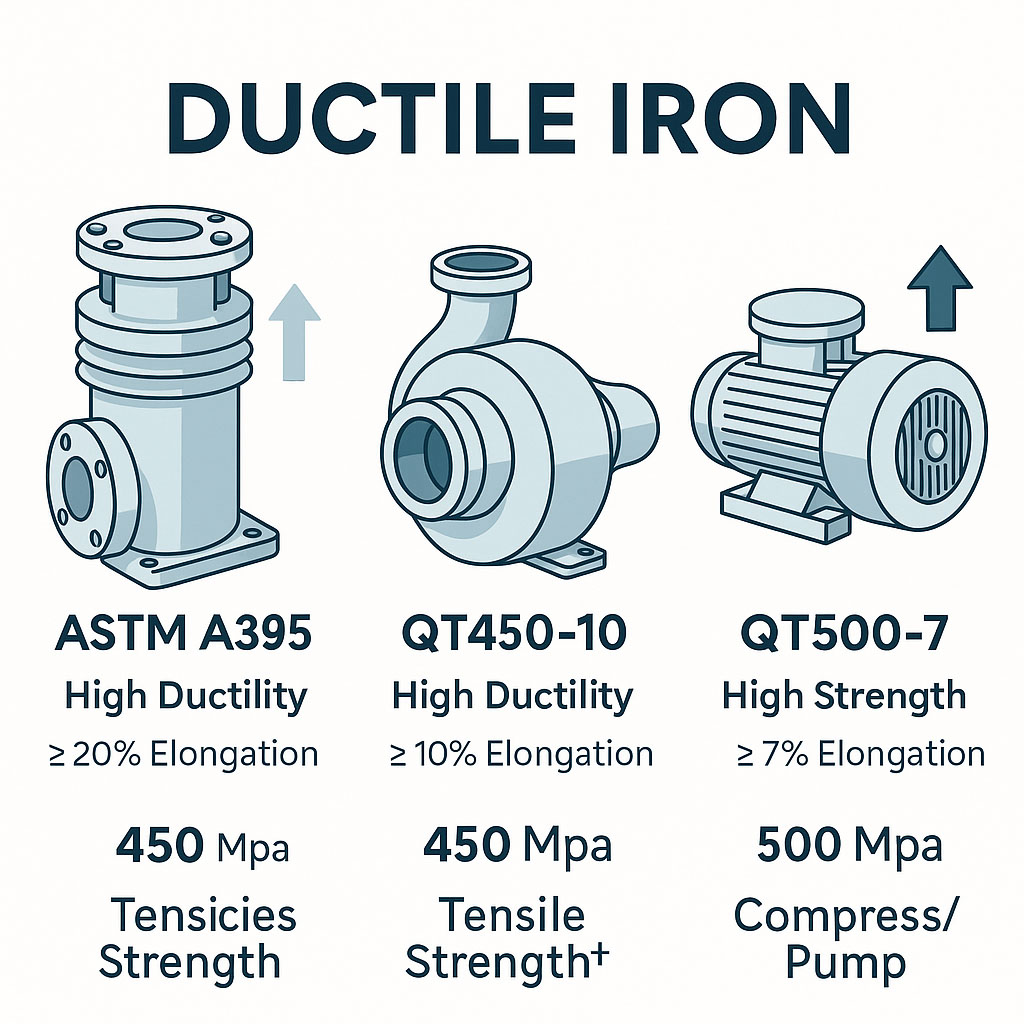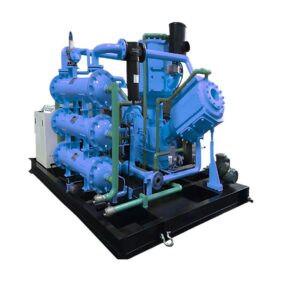파이프라인 가스는 압력을 높이지 않고는 장거리 이동이 불가능합니다. 이 작업은 천연 가스 압축기 스테이션전략적으로 배치된 시설로, 유정에서 도시 관문까지 가스가 흐르도록 하는 역할을 합니다. 이 가이드에서는 가스 압축 공정, 주요 스테이션 장비, 신뢰할 수 있는 가스 공급업체를 선택하는 방법을 알아봅니다. 천연 가스 압축기 제조업체.
1️⃣ 압축기 스테이션이 필수적인 이유
파이프라인 내부의 마찰, 고도 변화, 분기 탭은 지속적으로 압력을 빼앗아 갑니다. 따라서 천연 가스용 압축기 스테이션 80~160km마다 유속을 복원합니다. 이 장치가 없으면 처리량이 정체되고 공급 계약이 실패하며 액체가 떨어져 부식을 일으킬 수 있습니다.
2️⃣ 단계별 가스 압축 프로세스
-
입구 분리
- 가스는 먼저 물과 응축수를 제거하는 스크러버로 들어갑니다. -
흡입 냉각
- 인터쿨러는 압축 전 온도를 낮춰 밀도를 높입니다. -
압축 단계
- 피스톤, 나사 또는 원심 임펠러는 압력을 파이프라인 사양에 맞게 높입니다. -
애프터 쿨링
- 압축 열이 제거되고 액체가 응축되어 녹아웃 포트를 통해 배출됩니다. -
계량 및 냄새 제거
- 유량계는 부피를 확인하며, 누출 감지를 위해 냄새 제거제를 주입할 수 있습니다. -
파이프라인으로 배출
- 깨끗하고 가압된 가스가 다음 여정 구간을 위해 메인 라인으로 다시 들어갑니다.
한편 원격 PLC는 진동, 온도 및 에너지 데이터를 기록하여 제어 센터가 여러 장치에서 부하 분담을 최적화할 수 있도록 합니다.
3️⃣ 현장에서 찾을 수 있는 핵심 장비
| 시스템 | 목적 | 일반적인 기술 |
|---|---|---|
| 원동력 | 연료를 샤프트 동력으로 변환 | 가스 엔진 또는 전기 모터 |
| 압축기 | 압력 상승 | 왕복, 스크류 또는 원심 |
| 쿨러 | 열 제거 | 에어핀 라디에이터 또는 열교환기 |
| 분리 | 액체 제거 | 수직 또는 수평 스크러버 |
| 제어 및 안전 | 자동화 / 종료 | PLC + SCADA + ESD 밸브 |
Keepwin 패키지는 무급유 왕복체와 고속 모터를 결합하여 API-618 진동 제한을 충족하면서 100bar 방전을 달성합니다.
4️⃣ 왕복 열차와 스크류 열차 중 선택하기
| 팩터 | 왕복 | 나사 |
|---|---|---|
| 압력(>80bar) | 높음 | ◻ 제한적 |
| 흐름 안정성 | 맥동 | Smooth |
| 부분 부하 효율성 | Strong | Lower |
| 유지보수 간격 | 8 000 h | 4 000 h |
따라서 크로스 컨트리 트렁크 라인은 다단계 피스톤에 의존하는 반면, 집결 시스템은 지속적이고 적당한 압력을 위해 트윈 스크류 스키드를 선호합니다.
5️⃣ 신뢰할 수 있는 제조업체 선택
비교 시 천연 가스 압축기 제조업체를 클릭하고 평가합니다:
-
API 인증 디자인(618, 11P)
-
유사한 가스 구성에서 입증된 레퍼런스
-
현지 서비스 팀의 가용성
-
예비 부품 리드 타임 72시간 미만
-
포트폴리오가 다음과 겹치는 경우 수소 압축기 제조업체-고도의 전문성을 나타내는 신호
6️⃣ 미래 준비: 수소 혼합
에너지 그리드는 5-20개의 % H₂ 블렌드를 준비하고 있습니다. 스테이션에는 수소 취성과 호환되는 재료와 씰이 필요합니다. 킵윈은 이미 주요 기관에서 인증받은 왕복식 스키드를 제공하고 있습니다. 수소 압축기 제조업체 표준을 준수하여 내일의 규정 준수를 오늘 보장합니다.
✅ 스테이션 디자이너를 위한 빠른 체크리스트
-
예상 최대 흐름의 110 %에 대한 크기입니다.
-
이중화를 위해 두 대 + 한 대의 대기 장치를 사용합니다.
-
건물 HVAC를 위한 재킷 수열을 회수합니다.
-
지속적인 누수 모니터링 센서를 설치하세요.
-
분기별 진동 분석을 실시하여 베어링 수명을 연장하세요.
자세한 정보가 필요하신가요?
는 완전한 모듈식 모듈을 공급합니다. 천연 가스용 압축기 스테이션엔지니어링, 제작 및 FAT를 포함한 다양한 서비스를 제공합니다. 맞춤형 디자인 패키지를 원하시면 팀에 문의하세요.
📧 keepwin@keep-win.com🌐 www.keep-win.com
압력을 유지하여 가스를 계속 이동시킵니다.











